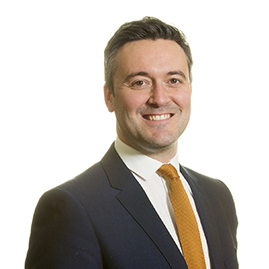
Earlier this week, the government responded to its technical consultation on the proposed treatment of unused pension funds and death benefits for inheritance tax purposes from 6 April 2027.
In principle, the main concerns raised throughout the consultation process, namely:
- The precise scope of the changes, and
- The reporting and payment of inheritance tax by pension scheme administrators on the pension component of an estate,
appear to have been broadly addressed (at least at a policy level), although some gaps remain.
Further detail is required from a legislative perspective (with the changes to be finalised as part of the Finance Bill 2025-26) and detailed guidance is needed from HMRC (especially on how the reforms will operate in practice for pension scheme administrators, personal representatives and beneficiaries).
Recap on the proposed changes
Currently unused pension funds (including death benefits payable from a pension) which are paid as lump sum death benefits through discretionary trust provisions do not form part of the deceased's estate and are not subject to inheritance tax.
The changes announced at the Autumn Budget 2024 will mean that from 6 April 2027 unused pension funds (including certain death benefits payable from a pension) will be brought into a person's estate for inheritance tax purposes.
Scope of the proposed changes
When announcing the reforms the Chancellor's stated intention was to:
"Restore the principle that pensions should not be a vehicle for the accumulation of capital sums for the purposes of inheritance, as was the case prior to the 2015 pension reforms".
Whilst this pointed to a focus on tackling the use of defined contribution schemes for purely inheritance tax planning purposes, the accompanying consultation from HMRC seemed to suggest that the reforms would be wider. In particular clarity was needed as to whether the changes would also apply to:
- Lump sum death benefits which derive from a defined benefit pension, or
- Standalone lump sum death in service benefits (which do not derive from a pension) and if so, whether there would be any difference between those provided through a registered pension scheme and those provided through an excepted group life arrangement.
Consultation response: although not part of the formal consultation questions, the government response at least in part addresses the uncertainty created over the scope of the reforms.
In particular, the response makes it clear that death in service benefits (which it defines as employment benefits which provide a lump sum payment typically as a multiple of salary) payable from a registered pension scheme will be out of scope of inheritance tax, regardless of whether the scheme is discretionary or non-discretionary.
The consultation response also:
- Confirms that any unauthorised payments made from a deceased member's pension fund will be in scope of inheritance tax, and
- Sets out detail around the proposed treatment of trivial commutation death benefits.
Our comment: this should mean that lump sum death in service benefits payable from both registered and excepted group life arrangements should fall outside the scope of inheritance tax.
The consultation response does not explicitly refer to whether defined benefit lump sum death benefits will fall in or out of inheritance tax. The draft legislation accompanying the response seems to suggest that defined benefit lump sum death benefits (other than lump sum death in service benefits) will fall within the inheritance tax net, but we will need to await the finalised legislation to clarify this.
Responsibility for reporting and paying inheritance tax
The consultation proposed that pension scheme administrators, rather than personal representatives, would become liable for the reporting and payment of any inheritance tax on the pension component of an estate.
Consultation response: the responses to the consultation highlighted a number of advantages of retaining the reporting and payment liability with personal representatives rather than moving this to pension scheme administrators.
In its response the government agreed that personal representatives should be responsible for these tasks in the context of inheritance tax due on unused penson funds and death benefits.
The response also confirmed that:
- Pension beneficiaries will become jointly and severally liable for any inheritance tax due on unused pension funds and death benefits to which they are entitled.
- Pension scheme trustees will be required to make the liability position clear and explain to non-exempt beneficiaries (such as beneficiaries who are not spouses or civil partners):
- That inheritance tax may be due on the pension when informing them about their benefits
- How they can access them, and
- The options for paying inheritance tax.
The consultation response summarises how the government expects information to be shared between pension scheme administrators, personal representatives and beneficiaries and notes that separate draft legislation will be published setting out a framework for information sharing and options for paying any inheritance tax due.
The draft legislation accompanying the consultation response sets out the proposed circumstances in which the scheme administrator can be asked to pay the inheritance tax on behalf of the beneficiaries.
Our comment: it will be crucial that the proposed framework is workable in practice and has sufficient flexibility to ensure that trustees, pension scheme administrators and personal representatives can all comply with their various responsibilities regarding the payment of death benefits and any inheritance tax due on the unused pension funds and death benefits.
HMRC have committed to publish further guidance and process maps to support relevant stakeholders ahead of implementation in April 2027. It will be important for the pensions industry to engage with HMRC to develop and refine these processes to ensure that they are fit for purpose in practice.
If you would like assistance in relation to your pension scheme's compliance with these forthcoming changes, or if you wish to discuss your scheme more generally, please get in touch with your regular Pension team contact.
This article is for general information only and reflects the position at the date of publication. It does not constitute legal advice.





